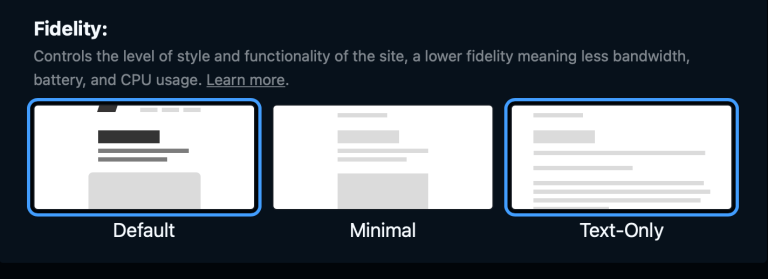Consumers use smartphones for a plethora of day-to-day tasks, including shopping. They discover, compare, and buy products on the go instead of using laptops or PCs. Businesses must adopt the “mobile-first” thinking to be sustainable. They cannot stay afloat, let alone thrive, without a solid mobile interface.
If your company does not have the budget for an app, optimize your website. Google processes over 3.5 billion searches every day, and most of them come from mobile devices (54.86%). This makes custom web development services essential. If users do not like what they see when they click on your links, you are missing out on revenue.
Mobile Optimization Insights
Table of Contents
Getting mobile-friendly is a must. The average human spends about 5 hours per day on a smartphone. Smaller screens account for 70% of web traffic, and 8 out of 10 top-ranked sites are optimized. Optimize with mobile to get in front of customers all the way through to the buying stage.
Having a mobile-friendly website is crucial for brand awareness, sales, and loyalty. Over 60% of users never visit unoptimized websites again. If users have a poor experience on your e-commerce site, you can lose them to competitors. Here are five crucial tips to implement for success in 2022.
Tip 1: Consider Human Limitations
Almost half of Americans need glasses. According to some estimates, a third of the global population will be nearsighted by 2030. 60% of people in the developed world have poor vision.
This means that designers have to make tough choices when they create interfaces for smaller screens. If you try to make everything stand out, nothing will stand out in the end.
Therefore, be very careful when choosing elements that convey your message. Imagine that your website must fit on a deck of cards. Follow these tips at the wireframing stage:
/*div{padding-right:0!important;padding-bottom:10px}.ml-form-formContent.horozintalForm .ml-button-horizontal{width:100%!important}.ml-form-formContent.horozintalForm .ml-button-horizontal.labelsOn{padding-top:0!important}}
/*]]>*/
/**/
![]()
![]()
- Use bigger buttons and fonts.
- Include more white space. Do not try to cover every inch with some form of content for visual elements.
- Stick to the primary call to action and focus on clarity and simplicity. You can add more CTAs afterward. It is tempting to include one into every scenario, but you will just end up with a bad design.
Tip 2: Optimize Buttons
One of the signs of poor design is when users zoom in or out to hit the buttons. This mistake is bound to result in a higher bounce rate.
The optimal height for a button on a mobile screen is 40px or more. These visual elements must be big enough, so users can tap on them. Allow visitors to zoom if necessary, and include the right viewport meta tag:
<meta name=”viewport” content=”width=device-width, initial-scale=1.0″>
Tip 3: Eight-Second Attention Spans
Shrinking attention spans are the bane of modern society, but they can work to your advantage. A recent study has shown that humans can stay focused on a single object for up to 8 seconds. This is shorter than a goldfish’s attention span!
To keep the audience focused on your site, hone its style. Write content that catches their attention and maintains it. These three tips will help you:
- Write for humans, not Google algorithms: the tone must be as natural, relaxed, and free-flowing as possible.
- Loosen up the language when appropriate.
- Format text using bullet points, tables, number lists, etc. Make sure there are no big passages.
Tip 4: Speed up
Make sure your landing page loads quickly — in under 3 seconds. Contemporary users are impatient and abandon sites that require more time. Here are a few tips to help you speed up page load:
- Fewer images:
Analyze all images and interactive elements you plan to include. Prioritize them. Leave out those that are simply nice-to-have, rather than mandatory.
- Smaller size:
Check the remaining elements for size and responsiveness. It is preferable to use responsive images when possible. To compress them, your designers could use a manual tool (e.g., compressor.io), or a plugin (e.g., Smush).
- Fewer tracking scripts:
If you track every user interaction, your pages can load forever. Speed and responsiveness are more important, so cut down on scripts.
- Bundle and minify:
Combine and compress JavaScript and CSS elements if possible. By creating one .js file and one .css file, you will reduce the number of requests to the server. Minifying decreases the download size.
There is just one caveat. If you are using the Bootstrap framework, combine and minify only those assets that relate to the components in use.
Tip 5: Leverage Social Media
Connect your products to your audience via the biggest social network in the world! Use Facebook’s Product Catalog to show your products to the target audience during each stage of the buying process.
Forget boring single-image ads. Facebook’s dynamic advertising will help you achieve much more. The network will show specific ads to users who have seen your products or added them to their cart. This approach is guaranteed to boost conversions and revenue.
In addition, reach out to those who have already made a purchase. Upsell and cross-sell to them! And there’s more.
Instagram now features shoppable tags. Users can visit your catalog just by tapping on the products in a photo. Take care of your social media profile and create aesthetically pleasing contact that will catch the eye, generate likes, and boost sales.
To Sum up
If your website is not adapted for mobile viewing, you are losing customers to competitors. Optimization is one of the primary conditions for online success. Create an outstanding user experience focused on convenience and smooth navigation patterns. Impressing customers with design is important, but visual elements should be used sparingly. Do not clutter the space.
Put yourself in your customer’s shoes at every stage of their journey. Content must be created for humans, not algorithms. Make sure it is easy to read — break it up into lists, insert infographics, etc. Finally, do not forget about the power of social media ads!





